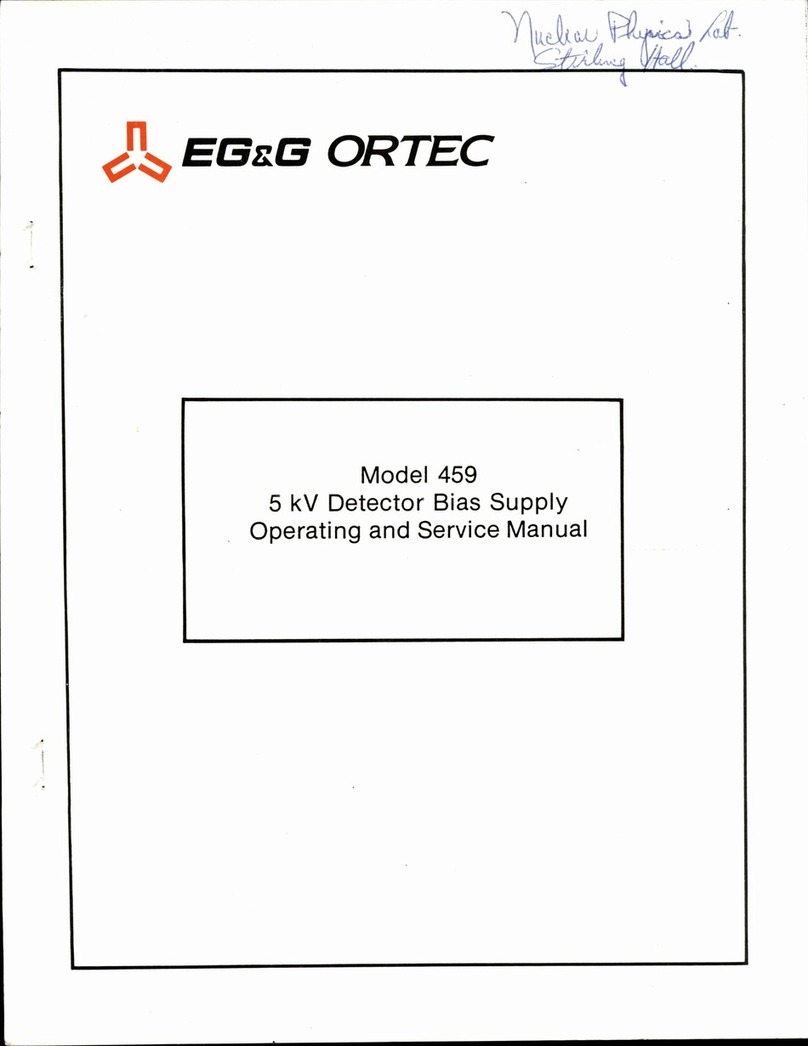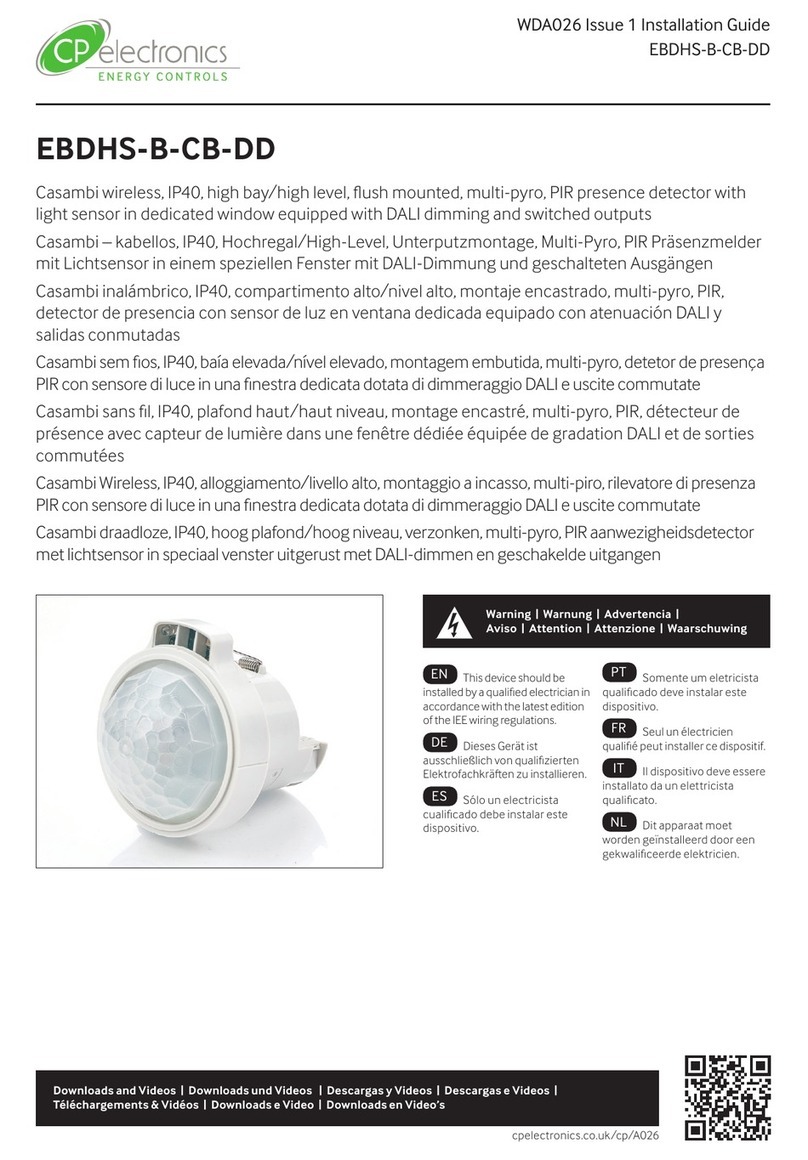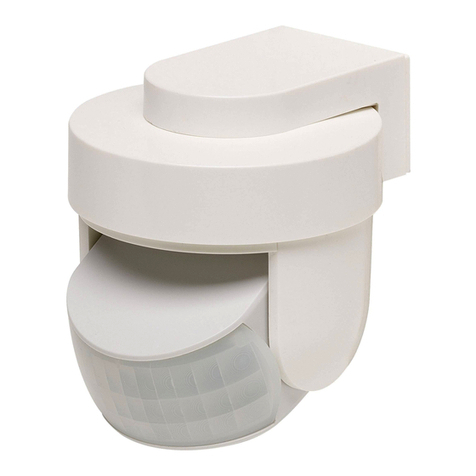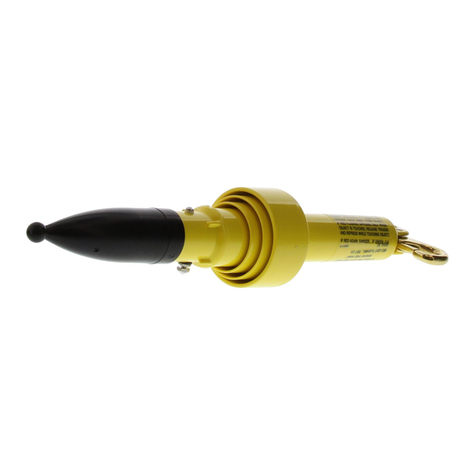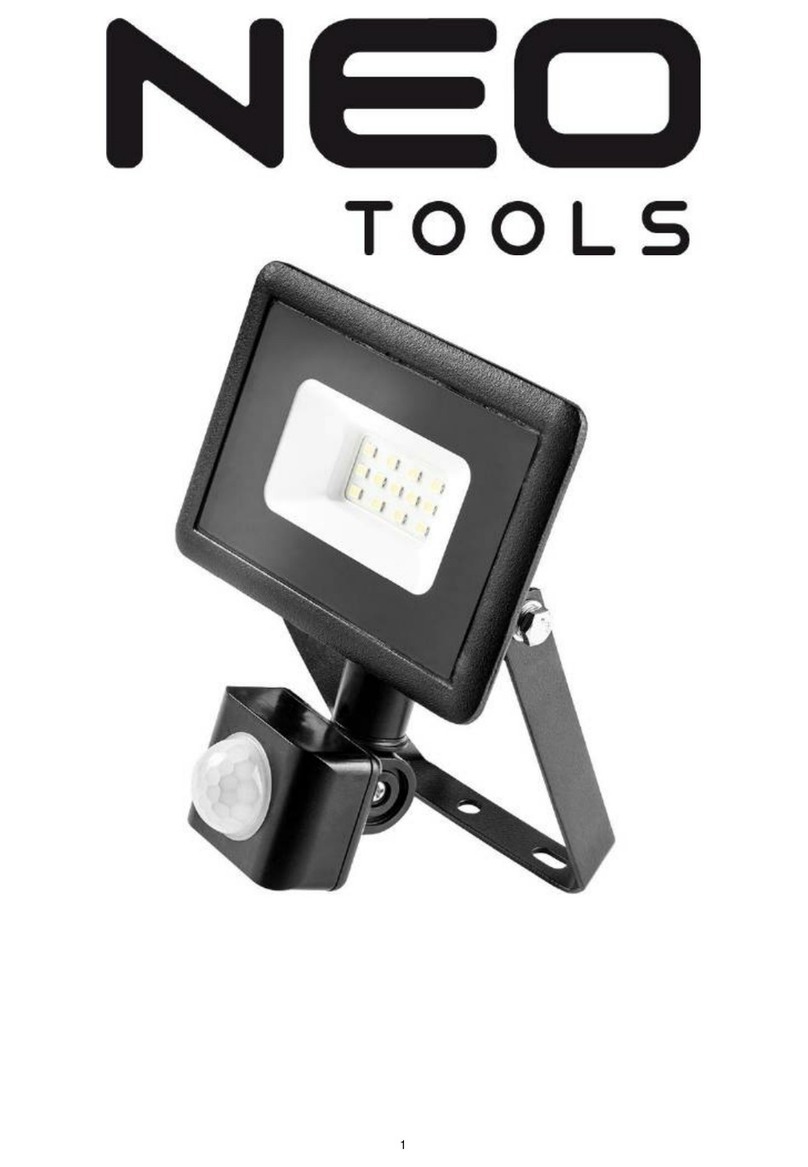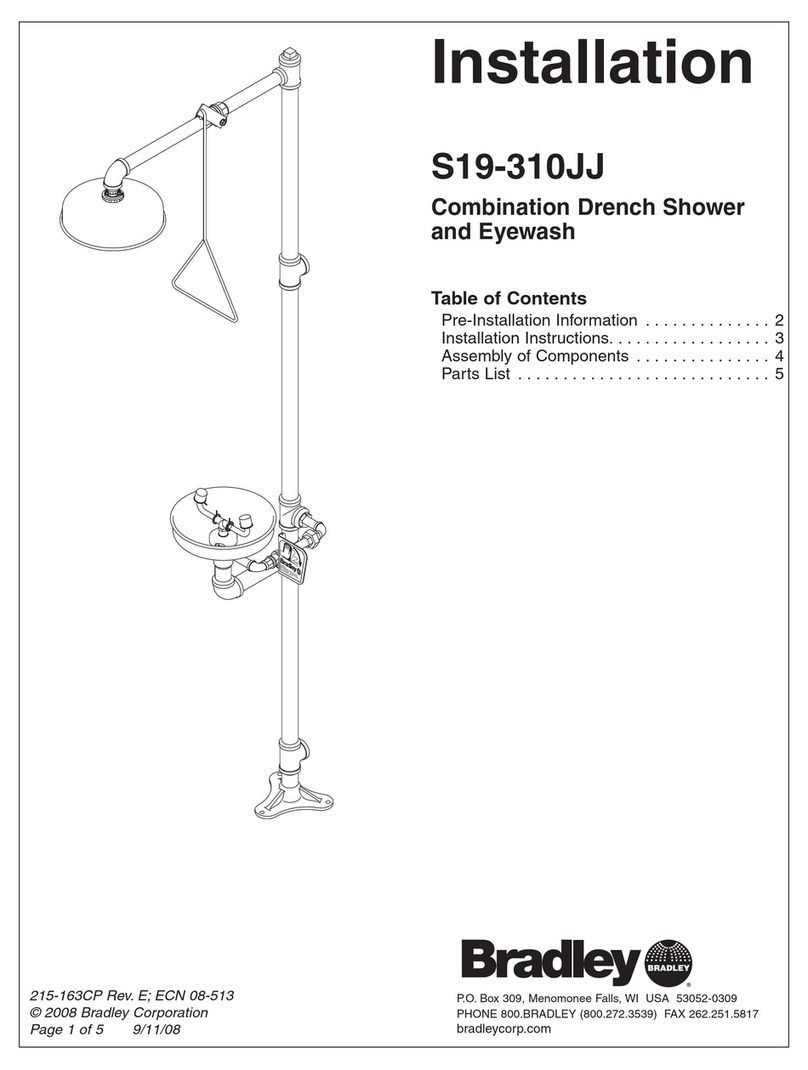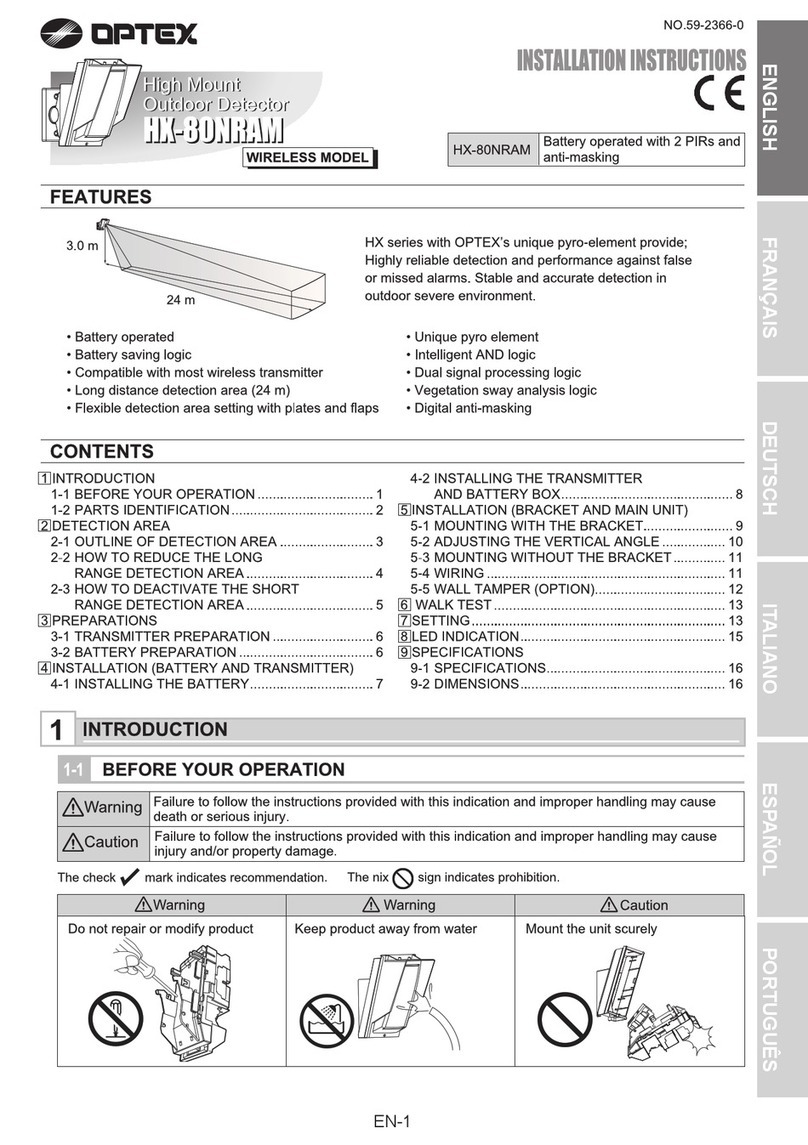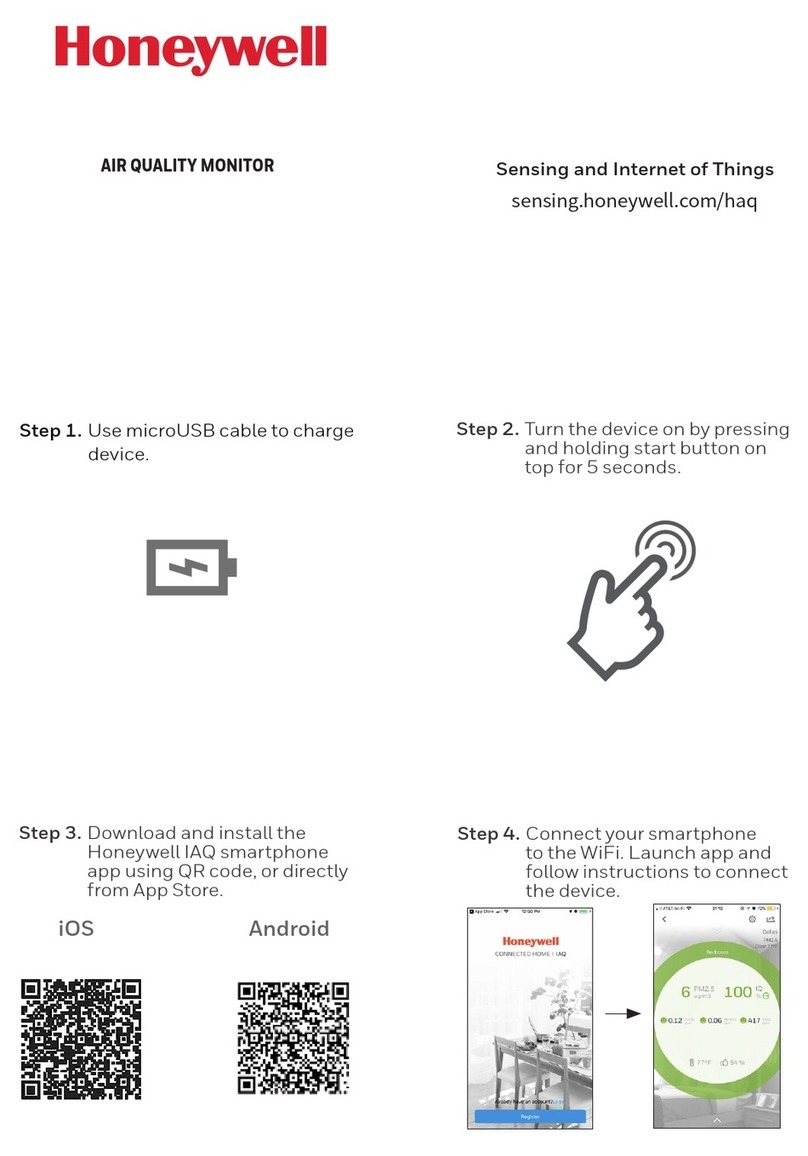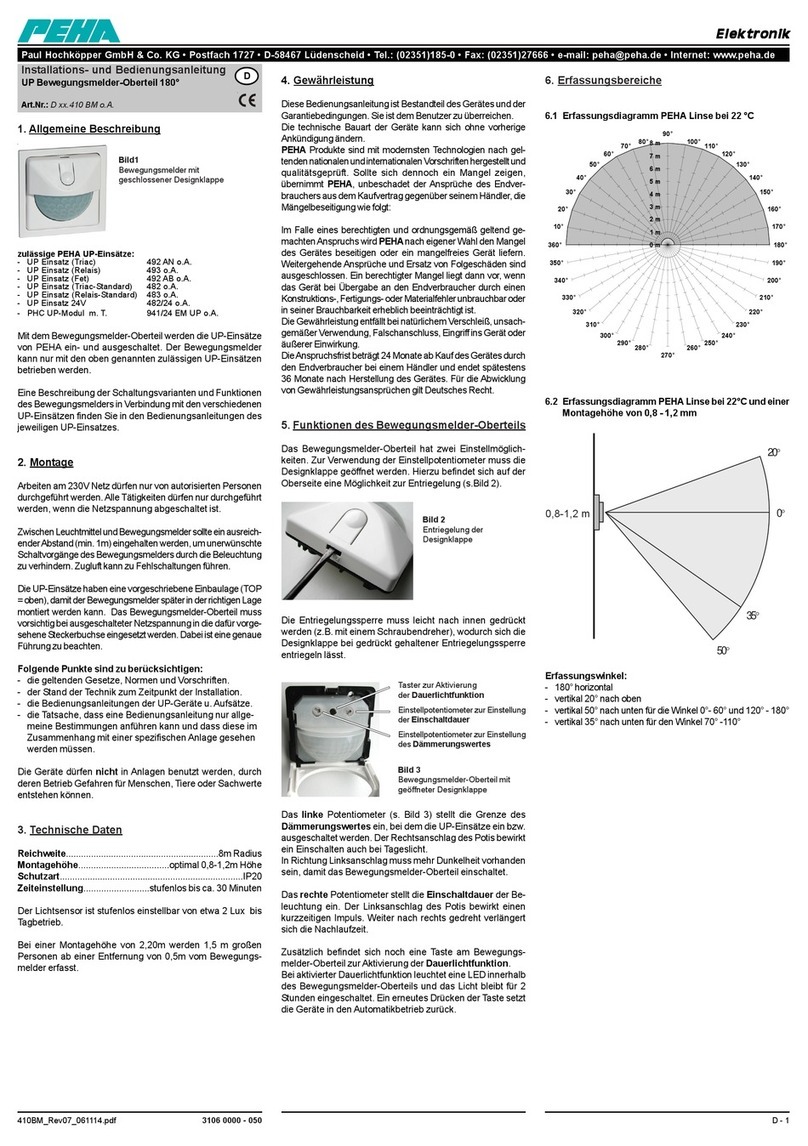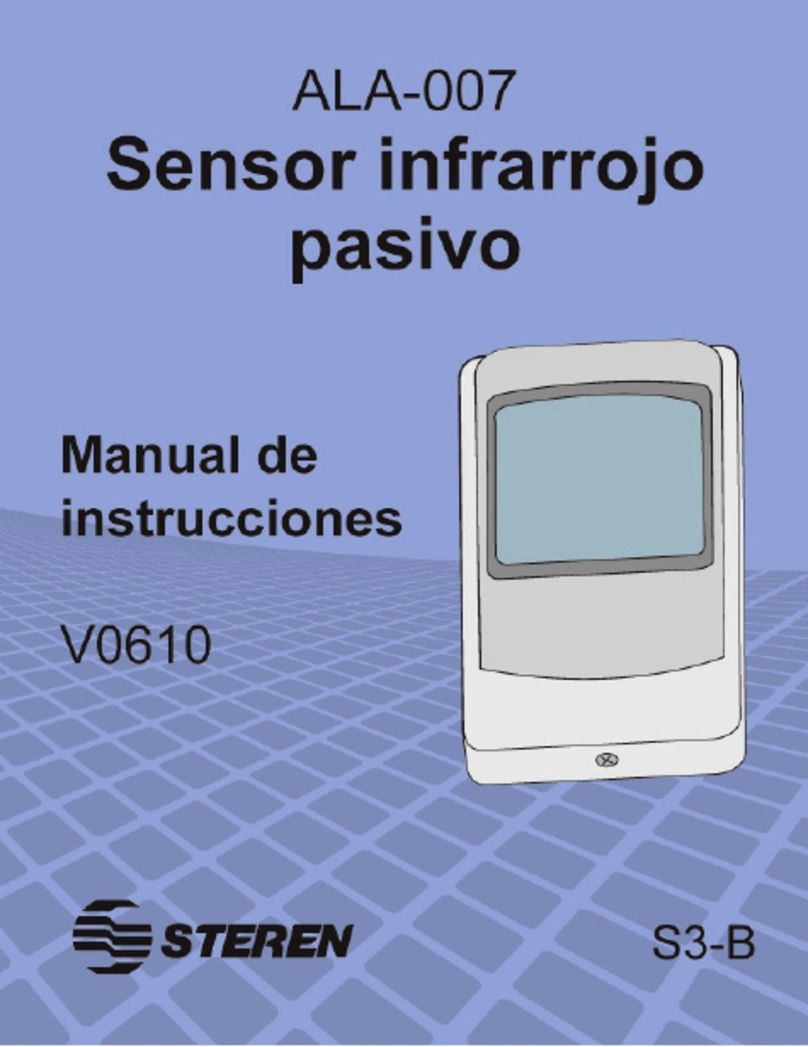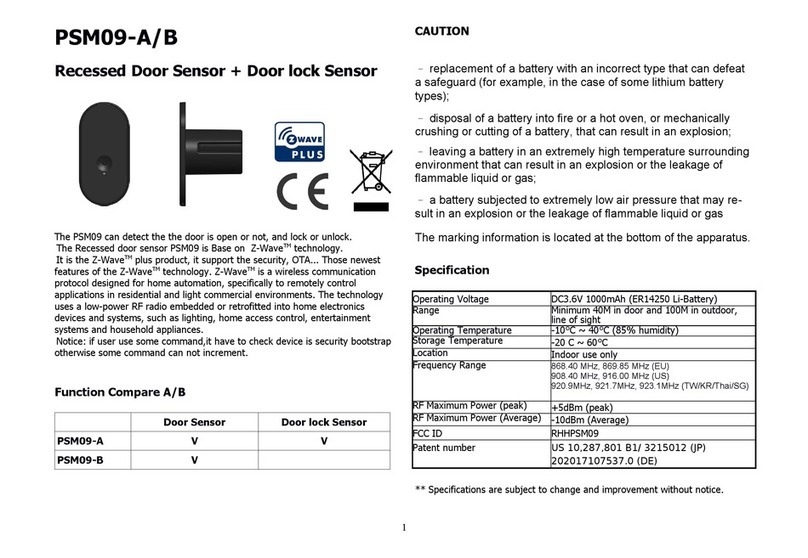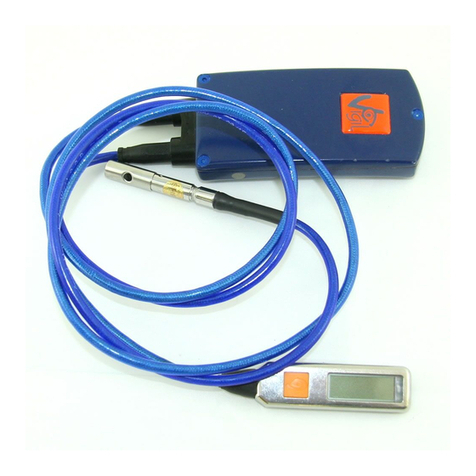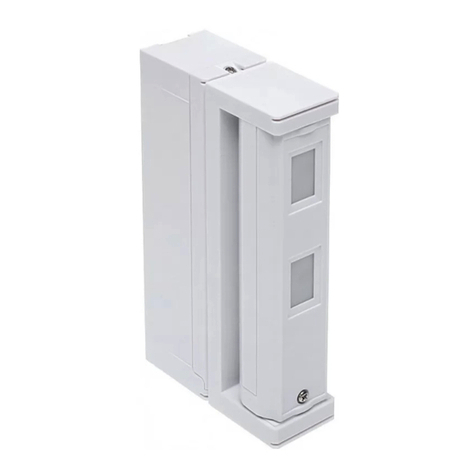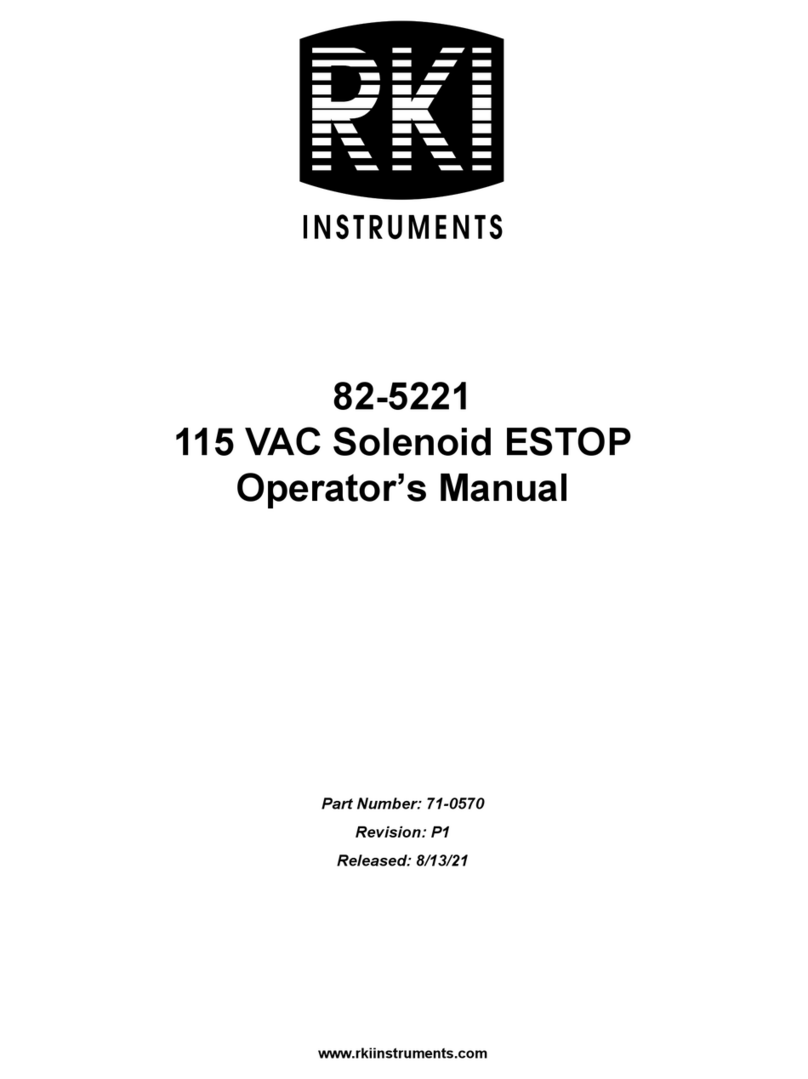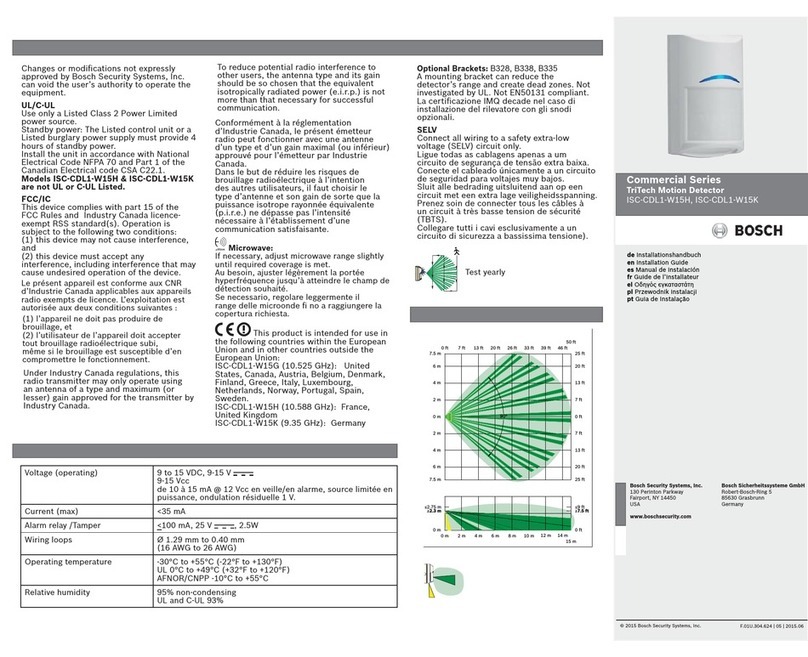EG&G ORTEC Gamma-X Service manual

PID
L
n
Gamma-X®
High-Purity
Germanium
(HPGe)
Coaxial
Detector
Systems
Preliminary
Operating
and
Service
Manual
Operating
and
Service
Manual
PRELIMINARY
®Trademark
owned
by
EG&G
ORTEC.

ii
Gamma-X
IMPORTANT
INFORMATION
1.
Read
carefully
the
standard
instructions
for
unpacking
the
system
and
filling
it
with
liquid
nitrogen,
and
the
checkout
procedures
that
are
included
in
Sections
2
and
3
of
this
manual.
2.
Fill
the
dewar
with
liquid
nitrogen
and
allow
at
least
six
hours
for
cooling
before
connecting
the
system
to
any
external
electronics.
ALWAYS
disconnect
the
system
from
external
electronics
before
allowing
it
to
warm
up.
NEVER
connect
the
system
to
external
electronics
before
the
detector
has
been
cooled
properly.
If
high
voltage
is
applied
to
the
detector
at
any
time
when
the
detector
is
not
at
liquid
nitrogen
temperature,
the
input
FET
of
the
preamplifier
may
be
damaged,
voiding
the
warranty.
A
damaged
input
FET
will
be
considered
"prima
facie"
evidence
that
high
voltage
has
been
applied
when
the
system
was
not
properly
cooled.
3.
NEVER
accelerate
a
warmup
of
the
cryostat
by
heating
it
with
an
external
source.
4.
The
plastic
bag
of
desiccant
pellets
over
the
cryostat-
preamplifier
assembly
absorbs
moisture
that
condenses
when
the
system
is
moved
from
a
cold
area
into
a
warm
area.
Leave
this
bag
in
place
until
the
system
has
been
in
the
warmer
atmosphere
long
enough
to
eliminate
any
danger
of
condensation.
5.
The
cylindrical
protrusion
(3/4
in.
diam
by
1
in.
long)
that
is
on
the
cryostat
is
the
vacuum
pump
attachment.
Do
not
tamper
with
this
at
any
time.
6.
Unlike
other
types
of
coaxial
germanium
detectors,
the
EG&G
ORTEC
Gamma-X
detector
requires
negative
bias.
7.
NEVER
warm
to
room
temperature
a
Gamma-X
detector
that
shows
signs
of
radiation
damage
(see
Sections
4
and
5
of
this
manual).
,
1^0
■'
'

G-11
SQUARE
10
X
10
TO
THE
HALF
INCH
SPECIFY
TRACING
OR
DRAWING
PAPER
ES
GRAPHIC
CONTROLS
CANADA
LTD,
MADE
IN
CANADA
tniiTrrji
i
:5c-

z:^7
-A
WZMST/W
^^/Ae:/
>.
_
n
f^V
<^^AA'J'AAr'M
/A/d//y
/r/(^
^
M/W
ff
'Af
7f
'
s:f£/

'
■
-/f.'
•
V
-
■
;
■■
...r
3-
\
■
-
..
■■
..
'•
,
•:-•
\
•
•
■'•:
.
H
^
,
■■■
■
■'
■
■
^
.
•
■
,
-
■'
■
■
.
.V
.
v:^::
'
"■
•
■■
. ..
.
..
;
^
,,
:,
.v...
.
-
.v
,
■■
X
K-
V
•
yy-,#^v
•
<
"-s-
■•■
"i
-
"isi^
'■•
■>
.
.^\
"-.
.
1-
■
,
^
X.
...;..
,
^>v.
.
.
.>
1
.
J
•
V,
'
--1#
.,
.
;
-■
■•
•-
•
'
•
■
V
...
••-
.
:,..y
-
■:
y.^
-y.
,
. ,
, .
.v.
.
Jar
.
■;.'
.
j.-
V-
■
'
•
,
V
•
■
'
V.""
"■
>
■-•
.
•'
•■
,,-
.
;■
,
'•..
,
■
•
'
.
■
•«
■-■>•:■
'■■'.
'
■-X
,
-
■ ■
'5sj
;
;
T:
'If
"i
'.x'
Nt
i
.
X
X-j
■
^
■
....
vsiwfeysar
'Si
-Z"''
...*
.
.
. .
.
-
1-.
>

u
Gamma-X
111
QUALITY
ASSURANCE
DATA
Gairana-X
High-Purity
Ge
Coaxial
Detector
System
GENERAL
DATA
Model
No.6A)X-3oaiO-5
Serial
No.
3l|-M-74^B
Shipping
Date
^-3
i
PHYSICAL
MEASUREMENTS
mm
{
Absorbing
Layers:
mm
j
Aluminum
^
^
cc
ISO
Ge
Dead
Layer
D.
"hM-
Window
to
Detector
5.0mm
Teflon
O
mm
Diameter
Length
Active
Vol
mm
Total
Capacitance
—'
ELECTRICAL
DATA
pF
at
V.
Recommended
Operating
Bias,
NEGATIVE
j"
ooo
V.
Preamplifier
Input
FET
(Cooled)
(Not
coolod).
PERFORMANCE
SPECIFICATIONS
Warranted
Measured
Efficiency
at
1.33
MeV
(1)
30
%
Resolution
at
1.33
MeV
.(1)
(
Resolution
at
88
keV
1)
Resolution
at
122
keV
(
_keV
eV
1)
^keV
Ratio
of
22
keV
counts
to
109
88
keV
counts
from
Cd
31.3
%
I
6
keV
eV
170
eV
OH
Amplifier
Time
Constant
(fi
PS
(o
us
us
(p
us
uS
(1)
Measured
in
accordance
with
IEEE
Standard
645-1977
(Supplement
to
IEEE
Standard
645-1977
(Supplement
to
IEEE
Std
325-1971,
Reaff
1977)
using
EG&G
ORTEC
standard
electronics.
Data
Certified
by
HJa
Date
CAUTION
Models
20
and
21
cryostats
can
be
damaged
by
unnecessary
overfilling
if
it
is
continued
long
enough
to
lower
the
temperature
of
the
flange
appreciably.
Never
allow
an
automatic
filling
to
proceed
without
supervision.
Any
extended
overfilling
of
the
LN2
can
freeze
the
Viton
0-
ring
and
cause
loss
of
vacuum,
which
may
seriously
damage
the
detector.
Gamma-X
is
a
Trademark
owned
by
EG&G
ORTEC

iv
Gairana-X
GAMMA-X
HIGH-PURITY
GERMANIUM
(HPGe)
COAXIAL
DETECTOR
SYSTEMS
Warranty
Statement
EG&G
ORTEC
warrants
its
Gamma-X
HPGe
Coaxial
Detector Systems
to
be
free
from
defects
in
material
and
workmanship
for
a
period
of
one
year
after
shipment.
EG&G
ORTEC
guarantees
that
the
detector
system
will
operate
within
the
warranted
specifications
regardless
of
the
number
of
thermal
cycles
between
liquid
nitrogen
temperature
and
room
temperature
to
which
the
system
has
been
subjected
and
regardless
of
how
long
the
system
has
been
stored
at
room
temperature
during
the
one-year
period.
This
warranty
is
subject
to
the
following
customer
obligations:
1.
The
cryogenic
FET
has
not
been
damaged.
2.
The
system
has
not
been
physically
or
electrically
abused.
3.
The
detector
has
not
been
subjected
to
neutron
damage.
Should
the
detector
system
fail,
through
no
fault
of
the
customer,
during
the
warranty
period,
and
having
at
all
times
been
handled
in
accordance
with
the
above
described
customer
obligations,
it
will
be
repaired
or
replaced
without
charge,
at
EG&G
ORTEC's
option,
and
will
be
fully
warranted
to
within
the
original
specifications
for
three
months
or
for
the
remainder
of
the
warranty
period,
whichever
is
longer.
EG&G
ORTEC's
liability
on
any
claim
of
any
kind,
including
negligence,
loss
or
damages
arising
out
of,
connected
with,
or
from
the
performance
or
breach
thereof,
or
from
the
manufacture,
sale,
delivery,
resale,
repair,
or
use
of
any
item
or
services
covered
by
this
agreement
or
purchase
order,
shall
in
no
case
exceed
the
price
allocable
to
the
item
or
service
furnished
or
any
part
thereof
that
gives
rise
to
the
claim.
In
no
event
shall
EG&G
ORTEC
be
liable
for
special
or
consequential
damages.
EG&G
ORTEC
makes
no
other
warranties,
expressed
or
implied,
and
specifically
NO
WARRANTY
OF
MERCHANTABILITY
OR
FITNESS
FOR
A
PARTICULAR
PURPOSE.

Gamma-X
v
Instructions
for
Returning
a
Gamma-X
HPGe
Detector
Coaxial
Detector
System
If,
for
any
reason,
it
becomes
necessary
to
return
a
Gamma-X
Coaxial
Detector
System
for
repair
or
replacement,
please
note
the
following
Instructions
and
precautions
regarding
shipment.
!•
Contact
EG&G
ORTEC
Contact
the
nearest
EG&G
ORTEC
representative
[in
the
U.S.
call
Customer
Services,
EG&G
ORTEC
Physical
Sciences
Division,
(615)
482-4411]
for
specific
Instructions
and
authorization
for
returning
the
detector.
Any
detector
that
Is
returned
without
prior
notification
having
been
given
to
EG&G
ORTEC
could
result
In
loss
or
damage
and
would
be
automatically
considered
out-of-warranty.
2.
Proper
Packing
A
detector
"returns
kit"
must
be
utilized
for
return
shipment.
The
kit
contains
the
necessary
Instructions
and
material
to
ensure
proper
packing.
Contact
the
nearest
EG&G
ORTEC representative
for
the
correct
returns
kit
for
your
particular
detector
before
attempting
return.
Improper
packing
could
result
In
shipment
damage
that
would
not
be
covered
under
the
EG&G
ORTEC
warranty
or
the
freight
forwarder's
Insurance
policy.
3.
Shipment
Coordination
and
Communications
Detectors
should
be
returned
through
the
freight
forwarder
collect.
For
out-of-warranty
repairs,
the
shipping
charges
will
be
billed
to
the
customer.
For
In-warranty
repairs,
the
reshlpment
charges
will
be
paid
by
the
customer.
Weekend
delays
In
transit
should
be
avoided;
thus
an
early
weekday
shipment
Is
recommended.
We
highly
recommend
that
the
customer
utilize
the
EG&G
ORTEC
preferred
forwarder
who
Is
familiar
with
shipment
of
HPGe
Coaxial
detectors.
EG&G
ORTEC
must
be
notified
of
specific
details
of
the
returning
shipment
(I.e.
,
freight
forwarder,
air
freight
carrier,
date,
time,
airway
bill
number,
etc.)
at
the
time
of
shipment
to
ensure
attention
upon
receipt
at
the
repair
facility.
The
Instructions
and
precautions
stated
herein
are
to
ensure
proper
attention
In
handling
the
shipment
of
an
expensive
radiation
detector.
Do
not
be
apprehensive
because
of
these
precautions.
Detectors
are
shipped
successfully
all
over
the
world
when
just
these
few
precautions
are
followed.
When
In
doubt
about
any
of
the
above-mentioned
precautions
or
Instructions,
please
contact
the
nearest
EG&G
ORTEC
representative
for
assistance.

vi
Gamma—X
TABLE
OF
CONTENTS
1.
GENERAL
1
1.1.
The
Gamma-X
Detector
Concept
1
1.2.
Cryostat Configuration
2
1.3.
Accidental
Warm
Up
Protection
4
1.4.
Spectroscopy
with
Gamma-X
Detectors
5
2.
RECEIVING,
UNPACKING,
AND
FILLING
WITH
LIQUID
NITROGEN
7
2.1.
General
7
2.2.
Unpacking
and
Filling
with
Liquid
Nitrogen
7
3.
CHECKOUT
AND
OPERATION
11
3.1.
General
11
3.2.
Test
Before
Application
of
Bias
13
3.3.
Detector
Resolution
Measurements
14
3.4.
Peak-to-Compton
Measurements
16
3.5.
Efficiency
Measurement
17
3.6.
^'^^Cd
Source
Measurements
18
4.
NEUTRON
RADIATION
DAMAGE
19
4.1.
General
19
4.2.
Neutron
Radiation
Damage
in
the
Gamma-X
Detector
19
5.
MAINTENANCE
AND
TROUBLESHOOTING
21
5.1.
Liquid
Nitrogen
21
5.2.
Packing
for
Reshipment
22
5.3.
Troubleshooting
Suggestions
22
APPENDIX
-
REFERENCES
29

Ganma-X
1.
GENERAL
1.1.
THE
GAMMA-X^
DETECTOR
CONCEPT
The
EG&G
ORTEC
Gainina-X
Detector
is
based
on
a
new
concept
in
coaxial
germanium
detector
geometries.^
Therefore
a
brief
description
of
this
concept
will
facilitate
the
use
of
this
instruction
manual.
Four
different
configurations
of
germanium
detectors,
both
Ge(Li)
and
HPGe,
are
shown
in
Fig.
1.1.
It
is
immediately
apparent
that
the
Gamma-X
detector
structure
is
the
only
one
in
which
the
outer
contact
is
sufficiently
thin
to
allow
low
energy
x-rays
to
penetrate
into
the
active
volume
of
the
detector.
For
practical
reasons,
this
type
of
structure
is
presently
the
best
implemented
by
using
N-
rather
than
P-type
HPGe
material.
500-1000
MICRONS
300
600
MICRONS
RADIATION
RADIATION
P-TYPE
CORE
CONVENTIONAL
COAXIAL
HP
G«
CLOSED
END
G*(Li)
0.3
MICRONS
N-TYPE
HP
Ge
100-200
MICRONS
RADIATION
RADIATION
P-TYPE
CORE
P-TYPE
HP
G«
TRUE
COAXIAL
G«<Li)
Very
Thick
Contact
-300-1000
MIcront
Thick
Contact
-100-
200
Microns
Very
Thin
Contact
0,3
Microns
Fig.
1.1.
Four
Different
Configurations
of
Coaxial
Germanium
Detectors
In
the
Gamma-X
structure,
a
"thick"
strongly
N-type
(Li-diffused)
contact
is
used
as
the
inner
electrode
while
a
thin,
ion
implanted,
strongly
P-type
contact
is
used
as
the
outer
electrode.
Bias
voltage
for
all
the
coaxial
detectors
shown
in
Fig.
1.1
is
applied
to
the
outer
electrode,
while
the
signal
is
picked
up
from
the
inner
electrode.
Since
the
positions
of
the
P-type
and
N-type
materials

2
Gamma-X
are
reversed
in
the
Ganma-X
detector,
this
type
of
detector
requires
a
negative
bias
voltage.
Consequently,
the
polarity
of
the
signal
from
the
inner
electrode
is
always
negative,
rather
than
positive
as
in
other
types
of
coaxial
germanium
detectors.
Except
for
the
negative
bias
voltage
polarity
and
the
negative
charge
signal
polarity,
the
operation
of
a
Garama-X
detector
is
identical
to
the
operation
of
any
other
germanium
coaxial
detector.
More
details
on
the
Gamma-X
detector
can
be
found
in
reference
1
and
in
EG&G
ORTEC
catalogs
and
Product
News
literature.
Another
outstanding
feature
of
the
Gamma-X
detector
is
its
high
degree
of
resistance
to
neutron
radiation
damage.
This
is
discussed
in
Section
4.
1.2.
CRYOSTAT
CONFIGURATION
A
standard
EG&G
ORTEC
Gamma-X
Coaxial
Detector
system
may
have
any
of
the
basic
configurations
shown
in
Fig.
1.2.
The
main
difference
between
these
systems
is
the
location
of
the
active
detector
element.
In
each
configuration
the
HPGe
coaxial
detector
element
is
located
concentrically
in
the
end
cap
with
its
front
face
approximately
5
mm
from
the
outer
surface
of
the
end.cap.
The
preamplifier
and
the
high-voltage
filter
are
connected
electrically
to
the
detector
through
vacuum
seals.
The
cryostat
is
designed
to
keep
the
detector
at
liquid
nitrogen
temperature
and
in
a
sealed
vacuum
for
many
years,
if
normal
precautions
are
taken.
In
most
HPGe
Coaxial
Systems
the
first
FET
of
the
preamplifier
is
mounted
inside
the
end
cap
and
cooled
to
achieve
the
best
possible
resolution.
If
this
be
the
case,
it
is
so
indicated
on
the
Quality
Assurance
Data
Sheet
on
page
iii
of
this
manual.

Gamma-X
ff
t*
ORTEC
GAMMA"*
'....
-A.
^4gBgf3
ORTEC
GAMMA;£J
4\
Ti
I
iiiH
Fig.
1.2.
Physical
Appearance
of
Typical
Gamma-X
Detectors

4
Gamma-X
1.3.
ACCIDENTAL
WARM
UP
PROTECTION
EG&G
ORTEC
offers
a
liquid
nitrogen
level
monitor,
the
729A,
that
can
be
used
to
protect
the
detector
system
against
accidental
warmups
which,
in
a
HPGe
coaxial
detector
system,
may
cause
damage
to
the
first
FET
of
the
preamplifier,
if
the
high
voltage
has
not
been
removed.
This
type
of
failure
is
more
likely
to
occur
in
older
systems.
If
the
high
voltage
is
inadvertantly
left
on
during
a
warmup,
it
is
possible
that
the
increased
internal
pressure
may
cause
a
discharge
through
the
input
FET.
The
EG&G
ORTEC
729A
Liquid
Nitrogen
Level
Monitor
is
a
single-width
NIM
module
with
audio
and
visual
alarms
that
are
activated
when
the
level
of
liquid
nitrogen
in
the
dewar
falls
below
a
predetermined
level.
At
the
same
time
the
module
disconnects
the
high
voltage
supply
by
remote
shutdown.
The
module
includes
a
battery
that
will
activate
the
alarms
even
in
the
case
of
a
power
failure.
The
Gamma-X
Coaxial
Detector
System,
if
disconnected
from
all
external
electronics,
can
be
warmed
up,
stored
at
room
temperature
for
any
desired
period,
and
then
be
cooled
again.
While
this
can
be
done
repeatedly
without
incurring
damage,
it
is
recommended
that
such
temperature
cycling
be
kept
to
a
minimum.
As
previously
stated,
before
the
system
is
thermally
cycled
it
must
be
disconnected
from
all
external
electronics;
high
voltage
can
be
applied
to
the
detector
only
after
a
minimum
of
six
hours
of
cooling
time.
This
is
necessary
each
time
liquid
nitrogen
is
introduced
into
the
warm
dewar.
When
a
warmed-up
system
is
to
be
recooled,
be
careful
to
minimize
contact
between
the
cold
nitrogen
gas
and
the
cryostat,
the
preamplifier,
or
the
high
voltage
filter.

Gamma-X
5
1.4.
SPECTROSCOPY
WITH
GAMMA-X
DETECTORS
When
any
semiconductor
detector
is
used
in
an
energy
spectroscopy
system,
the
detector
element
absorbs
the
energy
from
an
incident
gamma
ray
or
x-ray
event
and
generates
a
current
pulse
whose
integral
in
the
time
domain
has
an
amplitude
that
is
proportional
to
the
absorbed
energy.
This
pulse
is
processed
through
the
preamplifier
that
is
attached
to
the
detector
assembly
and
then
through
the
main
amplifier
and
into
a
multichannel
analyzer
or
other
data
acquisition
system.
The
analyzer
measures
the
amplitude
of
each
pulse
and
stores
a
record
of
the
event
in
its
memory.
After
a
sufficiently
large
number
of
events
have
been
detected,
measured,
and
stored,
the
data
in
the
multichannel
analyzer
represents
a
spectrum
of
energies
vs
frequency
of
repetition.
60
For
reference.
Fig.
1.4
is
a
spectrum
that
was
obtained
for
Co,
using
a
typical
EG&G
ORTEC
Gamma-X
Coaxial
Detector.
The
range
of
energies
in
this
spectrum
is
from
0
to
about
1.5
MeV
and
the
two
principal
energy
lines
for
the
source,
at
1.17
and
1.33
MeV,
are
seen
clearly
as
high
peaks
in
the
spectrum.
The
vertical
deflections
in
the
display
are
logarithmic
rather
than
linear;
this
practice
is
standard
because
it
permits
observation
at
the
same
time
of
small
peaks,
resulting
from
relatively
few
counts,
and
major
peaks
that
result
from
very
high
count
levels.
Figure
1.5
shows
the
portion
of
interest
in
the
spectrum
of
Fig.
1.4.
Any
energies
outside
these
limits
are
simply
not
included
in
the
spectrum,
but
the
details
of
the
photopeaks
are
much
easier
to
discern
in
this
partial
spectrum.

Gamma-X
MMMW—
Fig.
1.4.
Full
Spectrim
Taken
with
Fig.
1.5.
Expanded
Portion
of
Interest
EG&G
ORTEC
Gamma-X
Coaxial
Detector
in
the
®°Co
Spectrum
of
Fig.
1.4
on
®^Co
As
previously
noted,
contrary
to
all
other
types
of
coaxial
Ge
detectors,
the
Gamma-X
detector
is
a
very
useful
spectroscopy
tool
on
X—
or
gamma—ray
"energies
down
to
below
10
keV.
This
feature
is
discussed
in
more
detail
in
Section
3.

Gamma-X
7
2.
RECEIVING,
UNPACKING,
AND
FILLING
WITH
LIQUID
NITROGEN
2.1.
GENERAL
Each
EG&G
ORTEC
Gamma-X
Coaxial Detector
System
is
shipped
in
a
crate
designed
to
protect
all
of
the
system
elements.
The
systems,
shipped
at
room
temperature,
must
be
unpacked
and
then
filled
with
liquid
nitrogen
to
be
put
into
operation.
In
the
side-looking
models,
this
is
done
easily
and
quickly
by
simply
pouring
the
liquid
nitrogen
from
another
dewar
(See
Section
2.2).
A
different
procedure
is
suggested
in
Section
2.2
for
filling
the
dipstick
models
(Models
20
and
21).
2.2.
UNPACKING
AND
FILLING
WITH
LIQUID
NITROGEN
1.
Remove
any
external
strapping
from
around
the
crate.
If
the
crate
has
a
heavy
cardboard
top,
remove
the
screws
that
hold
the
top
to
the
base
of
the
pallet.
If
the
crate
has
a
plywood
top,
remove
the
six
wing
nuts
that
are
accessible
through
the
crate
sides
near
the
floor.
In
either
case,
when
the
top
cover
is
free
from
the
pallet
base,
lift
it
carefully
straight
up
to
uncover
the
detector-
preamplifier-dewar
assembly.
The
system
will
look
like
that
in
Fig.
2.1.
2.
Cut
and
remove
the
strapping
that
secures
the
cryostat
and
preamplifier
to
the
dewar
handles.
Inspect
the
aseembly
for
physical
damage
that
might
have
occurred
during
shipment.
3.
Cut
the
straps
that
hold
the
dewar
to
the
floor
of
the
crate
and
remove
the
complete
detector
assembly
from
the
crate.
Save
the
pad
under
the
dewar
and
use
it
as
a
shock
mounting
at
its
intended
operating
location.
Store
the
crate
for
possible
re-use
at
a
later
date.

Gamma-X
'i
SSiSmi
Fig.
2.1.
A
T3^ical
Gamma-X
Detector
System,
Showing
Method
of
Packing
Inside
the
Crate
4.
Fill
the
dewar
with
liquid
nitrogen.
For
a
side-looking
detector
system,
cover
the
detector
and
preamplifier
with
a
sheet
of
plastic
or
other
protection
to
prevent
any
liquid
nitrogen
from
being
accidentally
spilled
on
these
components.
Then
pour
the
liquid
nitrogen
from
a
supply
dewar
into
the
operating
dewar;
keep
top
caps
in
place
on
both
dewars
at
all
times
except
when
the
transfer
is
actually
being
made
so
that
moisture
absorption
and
icing
are
minimized.
For
a
Model
20
or
21
system,
a
nitrogen
transfer
collar
is
included
between
the
top
of
the
dewar
and
the
cryostat
assembly.
The
two
stainless
steel
tubes
that
project
through
the
molded
collar
are
for
filling
and
venting,
and
these
are
interchangeable.
Attach
a
length
of
tubing
to
the
tube
that
will
be
used
as
a
vent
and
allow
it

Gamma-X
9
to
hang
over
the
side
of
the
dewar
to
carry
the
cold
gas
and
overflow
away
from
the
preamplifier
so
that
moisture
condensation
on
and
in
its
components
is
prevented.
Attach
A
short
length
(3
ft)
of
tubing
from
the
outlet
of
a
filling
dewar
to
the
fill
tube
on
the
nitrogen
transfer
collar
of
the
detector
assembly.
To
initiate
the
transfer,
pressurize
the
filling
dewar
with
no
more
than
3
to
5
psig
of
dry
nitrogen
gas.
CAUTION
Provide
a
pressure
relief
at
not
more
than
5
psig
on
the
supply
dewar
so
that
it
will
not
become
over-pressurized
in
the
event
that
the
tubes
should
become
blocked
with
ice.
For
safety
reasons,
air
or
oxygen
should
not
be
used
for
pressurization.
Since
the
system
is
shipped
at
room
temperature,
initially
the
liquid
nitrogen
will
vaporize
instantly
as
it
cools
the
walls
of
the
dewar
and
the
dipstick,
and
liquid
nitrogen
will
be
emitted
from
the
vent
tube
of
the
detector
system.
When
the
walls
of
the
dewar
and
the
dipstick
begin
to
be
sufficiently
cold,
the
liquid
nitrogen
will
begin
to
collect
in
the
dewar.
The
transfer
should
continue
until
liquid
nitrogen
exhausts
from
the
vent
tube.
By
then
the
vehement
bubbling
of
the
liquid
nitrogen
in
the
dewar
of
the
detector
system
should
have
largely
subsided.
Six
hours
later,
proceed
to
top
off
the
dewar,
thus
replacing
the
liquid
nitrogen
that
will
have
been
used
to
bring
the
system
temperature
down
to
equilibrium.
On
older
systems,
there
may
be
some
condensation
of
moisture
on
the
end
cap
if
a
plastic
bag
of
fresh
silica
gel
desiccant
is
not
tightly
in
place,
covering
the
end
cap
and
cryostat.

10
Gamma-X
5.
Although
EG&G
ORTEC
does
not
reconmend
this
practice,
it
is
possible
to
fill
and
empty
the
dewar
of
a
Model
20
or
21
system
through
the
dewar
top
when
the
dipstick
has
been
removed.
If
this
is
done,
always
hold
the
cryostat
in
its
normal
orientation
(i.e.,
with
the
end
cap
lower
than
the
cooling
rod);
otherwise
some
molecular
sieve
could
fall
down
from
the
cooling
rod
into
the
end
cap
and
result
in
detector
malfunction.
6.
As
previously
stated,
external
electronics
should
be
connected
to
the
detector
system
only
when
the
detector
has
been
properly
cooled.

Gamma-X
11
3.
CHECKOUT
AND
OPERATION
3.1.
GENERAL
After
the
dewar
has
been
filled
to
its
capacity
and
the
subsequent
steps
have
been
taken
as
described
In
Section
2,
Install
the
detector
In
an
energy
spectroscopy
system
and
operate
the
system
to
check
the
specifications
that
are
Included
In
the
Quality
Assurance
Data
Sheet
on
page
111
of
this
manual.
This
will
accomplish
two
purposes;
assure
that
no
damage
was
Incurred
during
shipment
and
provide
the
basic
orientation
to
the
use
of
radioactive
sources
for
testing
the
system.
The
basic specifications
are
based
on
spectral
measurements
made
with
^^^Co
and
^'^^Cd
sources.
The
electronic
system
to
be
used
for
the
measurements
Includes
the
detector
with
Its
attached
preamplifier
and
high-voltage
filter,
a
main
amplifier,
an
optional
biased
amplifier,
a
multichannel
analyzer,
a
precision
pulse
generator,
a
detector
bias
power
supply,
and
an
oscilloscope.
The
typical
system
arrangement
Is
shown
In
Fig.
3.1.
DETECTOR
BIAS
POWER
SUPPLY
PRECISION
PULSE
GENERATOR
n
HIGH
VOLTAGE
DETECTOR
PREAMPLIFIER
MAIN
OSCILLOSCOPE
1
,
MULTICHANNEL
FILTER
AMPLIFIER
ANALYZER
OPTIONAL
BIASED
AMPLIFIER
Fig.
3.1.
Interconnection
of
Components
In
a
Typical
Energy
Spectroscopy
Syst
em
Table of contents
Other EG&G Security Sensor manuals
